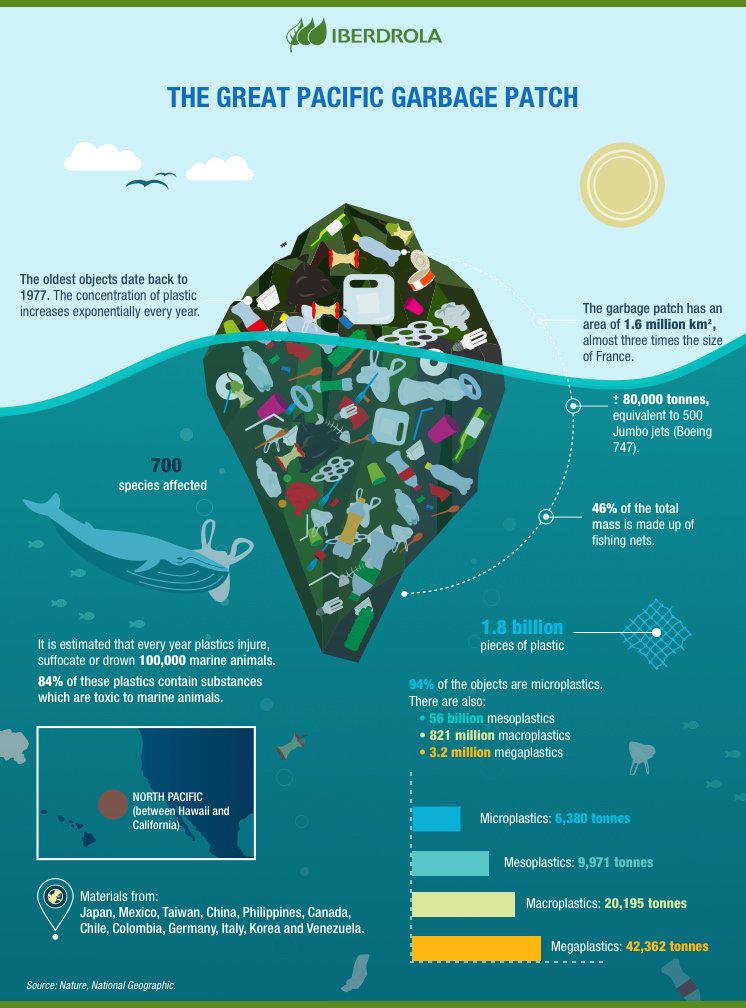The Ocean Cleanup Project: Explained to Kids
1.8 trillion pieces of plastic float at the surface of the Pacific Ocean between California and Hawaii. That filthy, polluted area is named the Great Pacific Garbage Patch. But don’t worry! Some very clever people based in the Netherlands came up with an incredible idea called The Ocean Cleanup!
On a mission to sort out the plastic mess in the Pacific Ocean, the Ocean Cleanup team created the first solution to successfully remove plastics from the oceans. The best news is that this solution is scalable, which means it can be applied in other similar situations of plastic polluting the waters around the world.
Their system is based on the idea of creating a free-floating coastline that concentrates the plastics in one space so it’s easier to remove them from the water.
To do so, they built a 600-meter-long (0.4 miles) floater and a 3-meter-deep (10 feet) skirt attached to it below. The floater stops the plastic from floating over it and acts as a heavy weight that collects them all together. The skirt prevents plastic from escaping underneath while also allowing fish to flow below it and not get stuck in the plastic patch.
Plastics float mainly on the surface and just a little bit beneath it—the same way this system is constructed to float, which enables trash to be gathered and fish to safely pass beneath it.
Carried by two coordinated ships, the system has a simple U-shape that takes advantage of the three natural oceanic forces: wind, waves, and currents. The plastics are being carried by the currents, but so is the coastline system.
The system is also extremely smart. It’s fitted with solar-powered lights, anti-collision systems, cameras, sensors, and satellite antennas that enable communication with the team while also gathering information about its own functioning.
Finally, another ship comes to collect the garbage—think of it as a marine garbage truck. When transported to land, the plastic gets recycled and transformed into durable products, which is also the main idea of the circular economy. You can see examples of some of those recycled products here.







